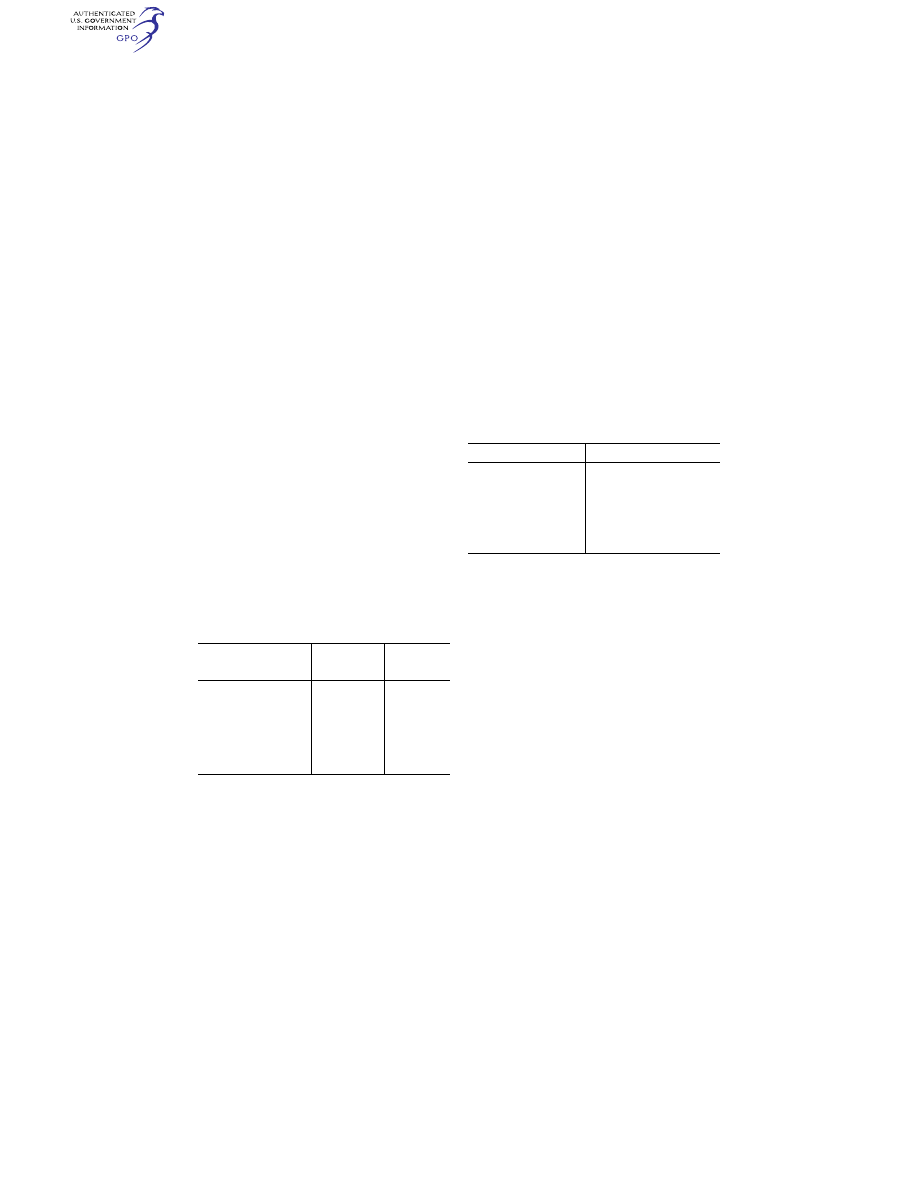
246
14 CFR Ch. I (1–1–24 Edition)
§ 25.397
§ 25.397
Control system loads.
(a)
General. The maximum and min-
imum pilot forces, specified in para-
graph (c) of this section, are assumed
to act at the appropriate control grips
or pads (in a manner simulating flight
conditions) and to be reacted at the at-
tachment of the control system to the
control surface horn.
(b)
Pilot effort effects. In the control
surface flight loading condition, the air
loads on movable surfaces and the cor-
responding deflections need not exceed
those that would result in flight from
the application of any pilot force with-
in the ranges specified in paragraph (c)
of this section. Two-thirds of the max-
imum values specified for the aileron
and elevator may be used if control
surface hinge moments are based on re-
liable data. In applying this criterion,
the effects of servo mechanisms, tabs,
and automatic pilot systems, must be
considered.
(c)
Limit pilot forces and torques. The
limit pilot forces and torques are as
follows:
Control
Maximum
forces or
torques
Minimum
forces or
torques
Aileron:
Stick ..............................
100 lbs ............
40 lbs.
Wheel
1
..........................
80 D in.-lbs
2
...
40 D in.-lbs.
Elevator:
Stick ..............................
250 lbs ............
100 lbs.
Wheel (symmetrical) .....
300 lbs ............
100 lbs.
Wheel (unsymmetrical)
3
.........................
100
lbs.
Rudder ..............................
300 lbs ............
130 lbs.
1
The critical parts of the aileron control system must be de-
signed for a single tangential force with a limit value equal to
1.25 times the couple force determined from these criteria.
2
D = wheel diameter (inches).
3
The unsymmetrical forces must be applied at one of the
normal handgrip points on the periphery of the control wheel.
[Doc. No. 5066, 29 FR 18291, Dec. 24, 1964, as
amended by Amdt. 25–38, 41 FR 55466, Dec. 20,
1976; Amdt. 25–72, 55 FR 29776, July 20, 1990]
§ 25.399
Dual control system.
(a) Each dual control system must be
designed for the pilots operating in op-
position, using individual pilot forces
not less than—
(1) 0.75 times those obtained under
§ 25.395; or
(2) The minimum forces specified in
§ 25.397(c).
(b) The control system must be de-
signed for pilot forces applied in the
same direction, using individual pilot
forces not less than 0.75 times those ob-
tained under § 25.395.
§ 25.405
Secondary control system.
Secondary controls, such as wheel
brake, spoiler, and tab controls, must
be designed for the maximum forces
that a pilot is likely to apply to those
controls. The following values may be
used:
P
ILOT
C
ONTROL
F
ORCE
L
IMITS
(S
ECONDARY
C
ONTROLS
)
Control
Limit pilot forces
Miscellaneous:
*Crank, wheel, or lever ..
((1 + R) / 3)
×
50 lbs., but not
less than 50 lbs. nor more
than 150 lbs. (R = radius).
(Applicable to any angle with-
in 20
°
of plane of control).
Twist ...............................
133 in.–lbs.
Push-pull ........................
To be chosen by applicant.
*Limited to flap, tab, stabilizer, spoiler, and landing gear op-
eration controls.
§ 25.407
Trim tab effects.
The effects of trim tabs on the con-
trol surface design conditions must be
accounted for only where the surface
loads are limited by maximum pilot ef-
fort. In these cases, the tabs are con-
sidered to be deflected in the direction
that would assist the pilot, and the de-
flections are—
(a) For elevator trim tabs, those re-
quired to trim the airplane at any
point within the positive portion of the
pertinent flight envelope in § 25.333(b),
except as limited by the stops; and
(b) For aileron and rudder trim tabs,
those required to trim the airplane in
the critical unsymmetrical power and
loading conditions, with appropriate
allowance for rigging tolerances.
§ 25.409
Tabs.
(a)
Trim tabs. Trim tabs must be de-
signed to withstand loads arising from
all likely combinations of tab setting,
primary control position, and airplane
speed (obtainable without exceeding
the flight load conditions prescribed
for the airplane as a whole), when the
effect of the tab is opposed by pilot ef-
fort forces up to those specified in
§ 25.397(b).
(b)
Balancing tabs. Balancing tabs
must be designed for deflections con-
sistent with the primary control sur-
face loading conditions.
VerDate Sep<11>2014
09:06 Jun 28, 2024
Jkt 262046
PO 00000
Frm 00256
Fmt 8010
Sfmt 8010
Y:\SGML\262046.XXX
262046
jspears on DSK121TN23PROD with CFR